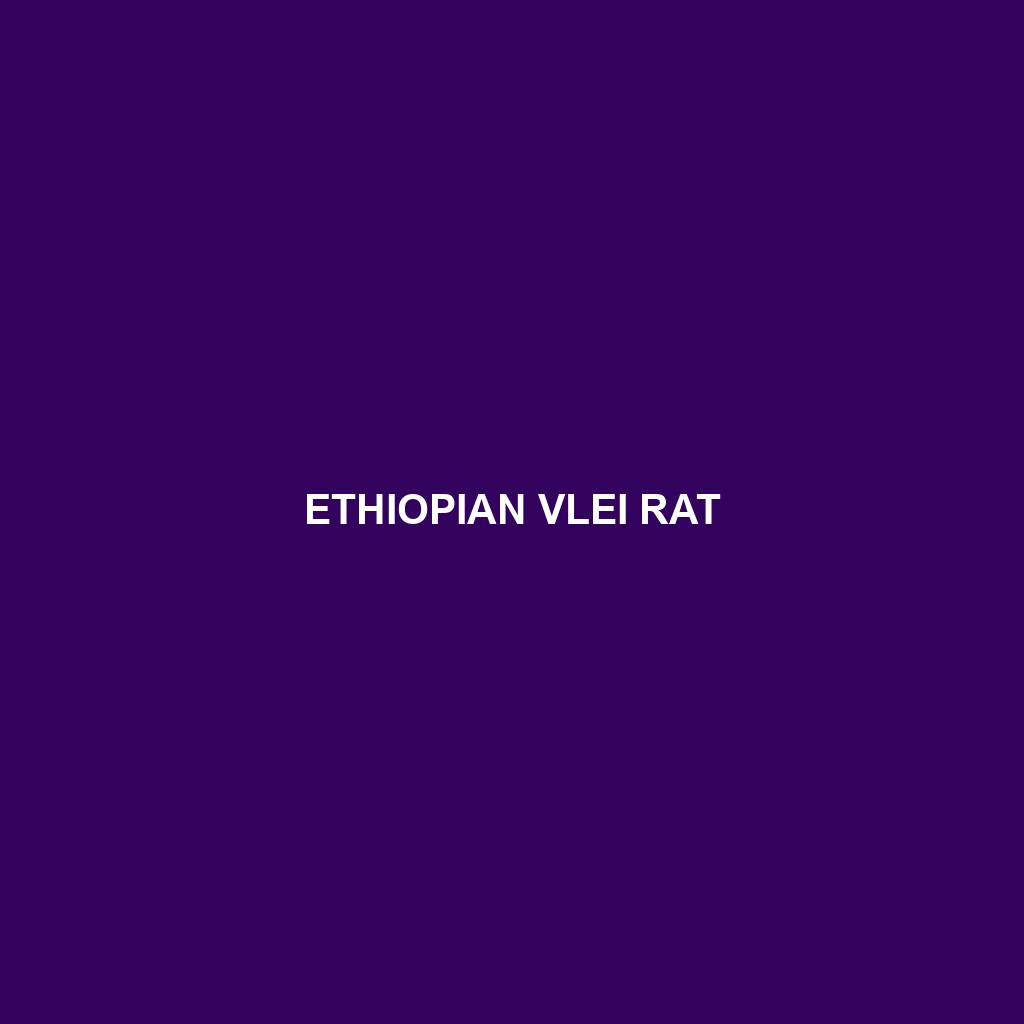Ethiopian Vlei Rat (Scientific Name: )
Common Name: Ethiopian Vlei Rat
Scientific Name:
Habitat
The Ethiopian Vlei Rat primarily inhabits the wetlands and marshy areas of Ethiopia and parts of the African Great Lakes region. This species thrives in high altitude grasslands and dense vegetation, often found near rivers and lakes, which provide the necessary moisture and cover. The preference for these habitats makes the Ethiopian Vlei Rat an important indicator of wetland health in these geographic locations.
Physical Characteristics
Ethiopian Vlei Rats are medium-sized rodents, typically measuring between 20 to 25 centimeters in length, excluding the tail. They possess a robust body, covered in dense fur ranging from a light brown to a dark gray color. Their distinctive features include large ears, long whiskers, and a tufted tail that aids in balance while navigating their grassy habitats. The Ethiopian Vlei Rat’s morphological adaptations make it well-suited for life in dense wetland vegetation, allowing for effective foraging and predator evasion.
Behavior
These rodents exhibit social behavior, often living in small family groups or colonies. They are primarily diurnal, engaging in foraging activities during daylight hours. Known for their agility, the Ethiopian Vlei Rat is also a proficient swimmer, utilizing nearby water bodies to escape threats. Their burrowing habits and the construction of grass-lined nests provide safety from predators while showcasing their strong survival instincts.
Diet
The Ethiopian Vlei Rat is an herbivore, primarily feeding on a variety of grasses, seeds, and aquatic plants. Their diet is essential for maintaining the health of their wetland ecosystem, as they help in seed dispersal. Due to their preference for green vegetation and soft, succulent plant parts, they play a vital role in controlling plant growth in their habitats, which can be beneficial for the overall ecosystem balance.
Reproduction
The breeding season for the Ethiopian Vlei Rat typically occurs during the rainy months when resources are abundant. Females are known to give birth to litters of 3 to 5 young after a gestation period of about 30 days. Offspring are born blind and helpless, relying on the care of both parents until they are capable of independent foraging. Mating displays are characterized by vocalizations and playful chases, a behavior that strengthens pair bonds within family groups.
Conservation Status
The current conservation status of the Ethiopian Vlei Rat is classified as **vulnerable** due to habitat loss from agricultural expansion and wetland degradation. Conservation efforts are crucial to preserving their natural habitats and ensuring the continued survival of the species in the face of environmental threats.
Interesting Facts
– The Ethiopian Vlei Rat has remarkable swimming capabilities, often found foraging in waterlogged areas.
– This species plays a significant role in the diet of local predators, including birds of prey and snakes, illustrating its importance in the food web.
Role in Ecosystem
As a herbivore, the Ethiopian Vlei Rat is integral to its ecosystem, aiding in plant growth and seed dispersal. Their burrowing activities help aerate the soil, promoting healthy plant growth while providing habitat for other species. The presence of Ethiopian Vlei Rats indicates a healthy wetland ecosystem, making their conservation vital for maintaining biodiversity in their native habitats.
